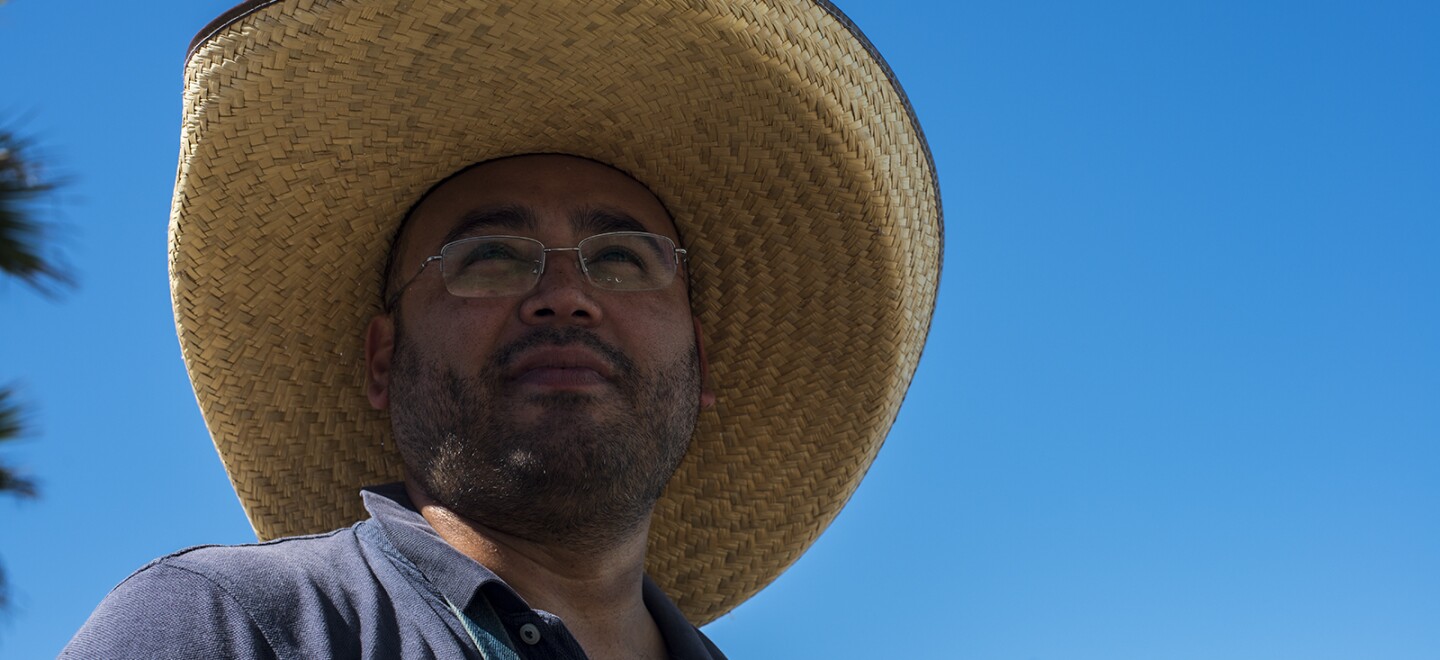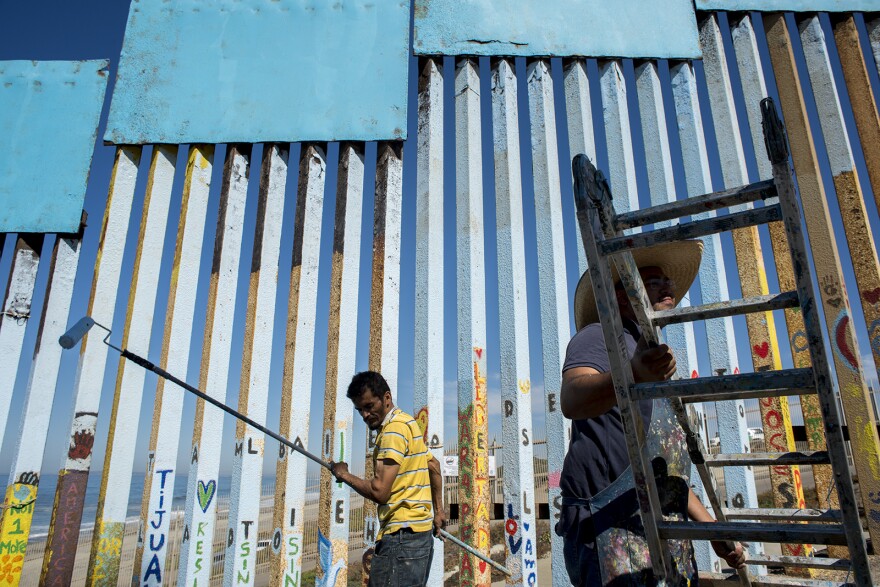This story is part of the America's Wall project.
Enrique Chiu climbed a ladder propped against the south side of the U.S.-Mexico border wall on a hill in Tijuana, overlooking the Pacific Ocean. He shook a bottle of spray paint and created yellow lines on the corrugated steel.
“The wall symbolizes lots of things. Sadness, shame, wall of death, wall of solitude,” said the 36-year-old. “But giving it color, giving it life with all the people and good vibes from this side, there won’t be a wall that will limit us, that will detain us, that will make us feel bad.”
The yellow lines Chiu sprayed on the corrugated steel formed an arm, a hand, a pointed finger.
“I’m painting someone pointing that way, toward the ocean, where there are no walls,” he said.
Chiu — who refers to himself as half Mexican, a quarter Chinese and a quarter European — wore thin-rimmed spectacles, a Mexican cowboy hat and a workman’s tool vest flecked with paint. Friends and strangers smeared colors on the fence beside him.
Every weekend since last December, Chiu has gathered people to paint what he hopes will become the world’s largest outdoor mural. Chiu said he aims to cover the entire length of the U.S.-Mexico border fence with his mural someday. So far, it covers 1.4 miles in Tijuana and Tecate. A two-mile mural in Pueblo, Colorado, holds the record.
Chiu is calling his community project “The Mural of Kinship.” Lured by messages on Facebook, WhatsApp or word of mouth, painters and nonpainters, children and adults, Mexicans, Americans and others arrive Saturday and Sunday mornings at a border fence location of Chiu’s choosing to paint animals, verdant landscapes, and words such as “Unity” or “Love.”
There are no rules except one:
“We’re not going to talk bad about anyone. We’re not going to offend anyone. The rule is they must paint something positive,” Chiu said.
The U.S. government built this part of the wall in the 1990s as part of Democratic President Bill Clinton’s Operation Gatekeeper, a border security initiative that focused on the San Diego-Tijuana region. The fence is made of recycled Vietnam War helicopter landing mats.
“People think the American dream can only be lived in the U.S. But on this side of the border there are dreams too. … On this side you can also create. On this side you can also change the world.”
Chiu said his focus is aesthetic and emotional, not political. He is intrigued by the idea of inverting the fence’s symbolism.
“We know that a wall divides, but we want to create something that unites people. We’re changing what the border wall symbolizes,” he said.
Chiu was born in Guadalajara, Mexico, and obtained a student visa to study art in Long Beach. He returned to Tijuana in 2008 during a wave of cartel violence, with the dream of transforming the city’s reputation. The local economy was suffering, in part because the bloodshed scared away tourists and investors.
Like other artists in Tijuana, Chiu wants Tijuana to be known for its culture rather than its cartels. He has led painting workshops for children as well as various art expositions. The border wall mural, he said, is his most ambitious project.
Now, it could be destroyed. The Trump administration plans to rebuild 14 miles of border fencing, starting with the landing mat fencing at the coast. Chiu said he is not worried.
“All of us artists who paint on the street know it’s ephemeral. We know every external wall is going to fall,” Chiu said. “But for a moment, it changed things. It brought people together. … That is a memory that will remain for all of history.”
He said if Trump builds another wall, he will paint the south side of that as well. Chiu wonders: If a migrant encountered his mural on the way to jump the fence, would its uplifting messages deter him from crossing?
“People think the American dream can only be lived in the U.S.,” he said. “But on this side of the border, there are dreams too. … On this side, you can also create. On this side, you can also change the world.”
















